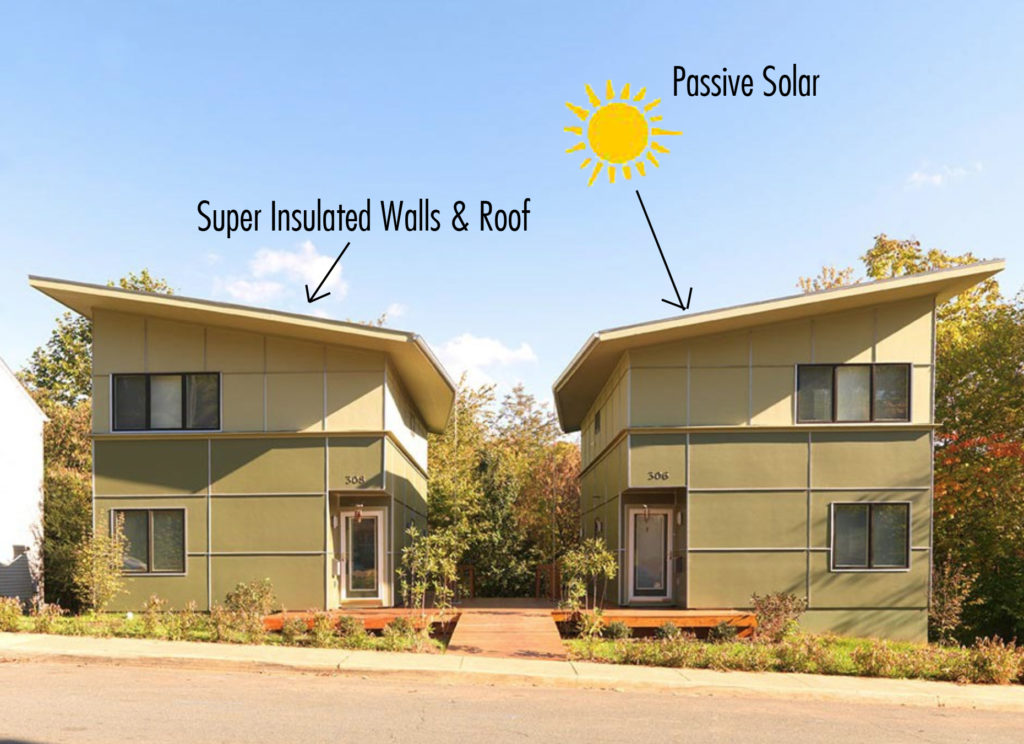Sustainable homes may seem like a luxury, but green design solutions can help close the wealth gap in the United States. For any potential homeowner, and particularly important for the low-income housing market, green affordable homes lower electricity and repair bills helping to achieve both environmental and economic sustainability.
Homeownership has been linked to a wide variety of social and economic benefits, including better mental health, neighborhood connectivity, and wealth accumulation. But the risks of homeownership are different for low-income households than other income brackets. Low-income homeowners are more likely to have to pay for repairs or maintenance costs that are beyond their budget. Lower-income households also pay a higher share of their income towards electricity bills than middle or high-income households.
Well-designed, environmentally-friendly and affordable homes can help make buying a good investment, no matter your income level.
When Charlottesville VA | Asheville NC architects hays+ewing design studio [heds] designed and planned a ten-home green affordable home development, we reserved two of the homes for Habitat for Humanity. Two families were selected by Habitat as the new home owners. Both were immigrants – one family had moved here from the Philippines and had co-habitated in a small apartment with a relative for seven years. The other family was from Afghanistan. This family had lost their husband/father and their home on the same day.
As the architects for the two homes, we focused on a few green affordable home solutions: keeping energy and maintenance costs low while using low-cost materials. We super-insulated the houses, making sure they would keep the warmth in during the winter and the heat out during the summer. We optimized for passive solar too, which meant shading out unwanted summer sun but allowing sunshine to penetrate the houses in colder months. Finally, we used Hardiepanel, which requires little upkeep, for the house siding, so the long-term maintenance costs would be low.
We also thought about what it would take for the residents to thrive in their new home. We created a common courtyard to foster community. We also convinced Habitat to frame an opening for a future stair to a basement so the families could rent their daylit, insulated basement and thereby subsidize their income. Through thoughtful design and incorporation of green affordable home best practices, hays+ewing design studio [heds] is helping these families find economic stability in their new adoptive city of Charlottesville.
In addition to the two Habitat for Humanity homes, we also designed a single-family, spec home on land we owned in the same community. We wanted the house to be sustainable but also affordable – the home sold before framing was even completed, a nice testament to the appeal of the home.
Spec homes are rarely designed sustainably. For, instance the better developer might integrate a “flash and batt” approach to insulating the walls, which means using 2” of spray foam insulation with batt insulation on top. This helps to reduce air displacement but there are still losses where the cold air is transferred at the wall framing. For this project heds architects used 5” of spray foam insulation in combination with an insulated plywood on the exterior. The insulated plywood thus acts as a break between the cold air and the wall framing to prevent the thermal bridging. You can see this strategy, along with our use of SIPS panels, solar hot water heating, and passive solar strategies in the diagram below.
This 2000 square-foot home was affordable despite its ambitions. It won a Virginia Society of the AIA Award of Excellence and a jurist praised the project as “boots on the ground” sustainability in the spec housing market.
As these two projects highlight, sustainable best practices make closing the wealth gap possible by lessening the risks low-income home-buyers face. Having both economic and environmental sustainability doesn’t have to be hard.
Co-written by Allison Ewing and Emily Hays



